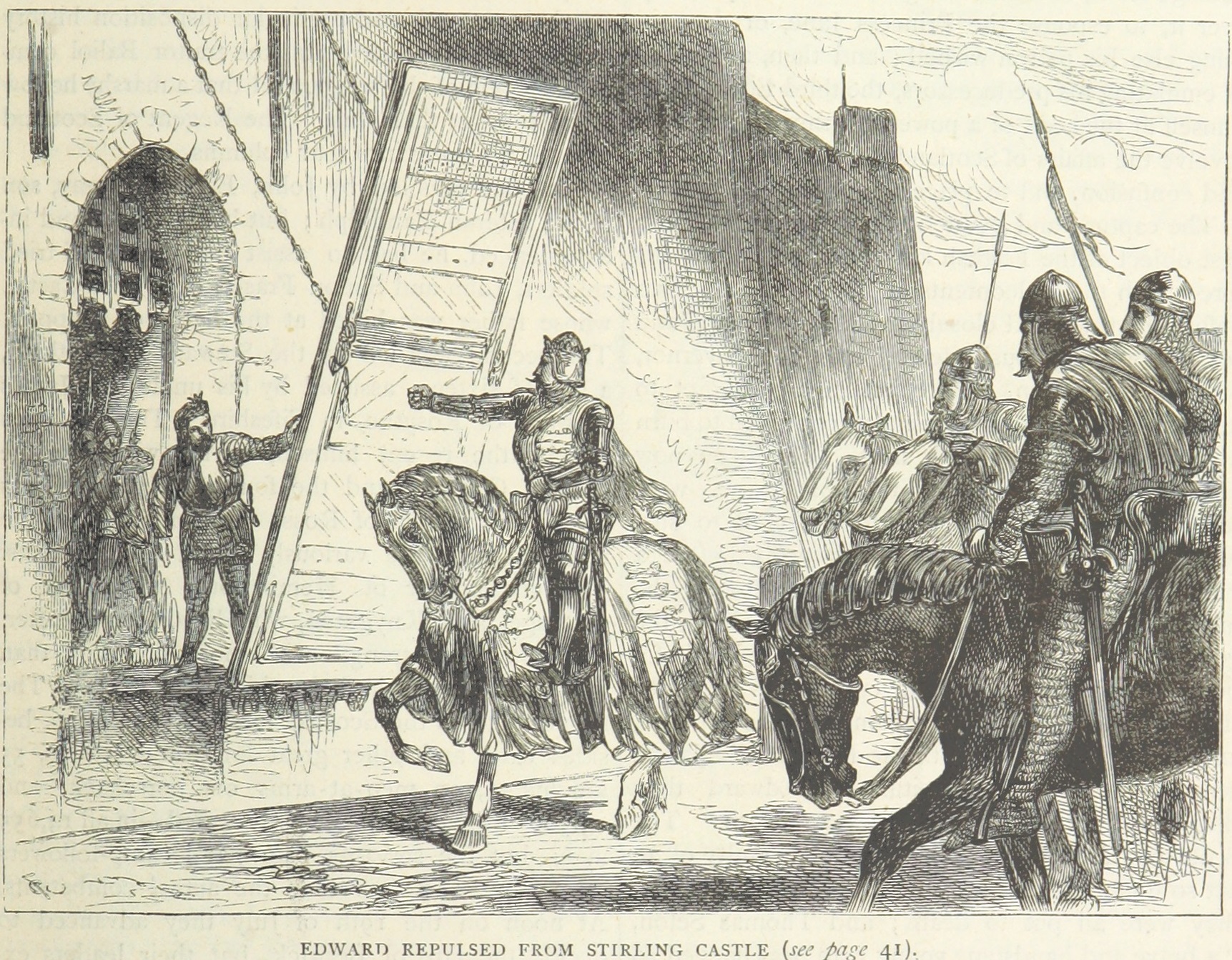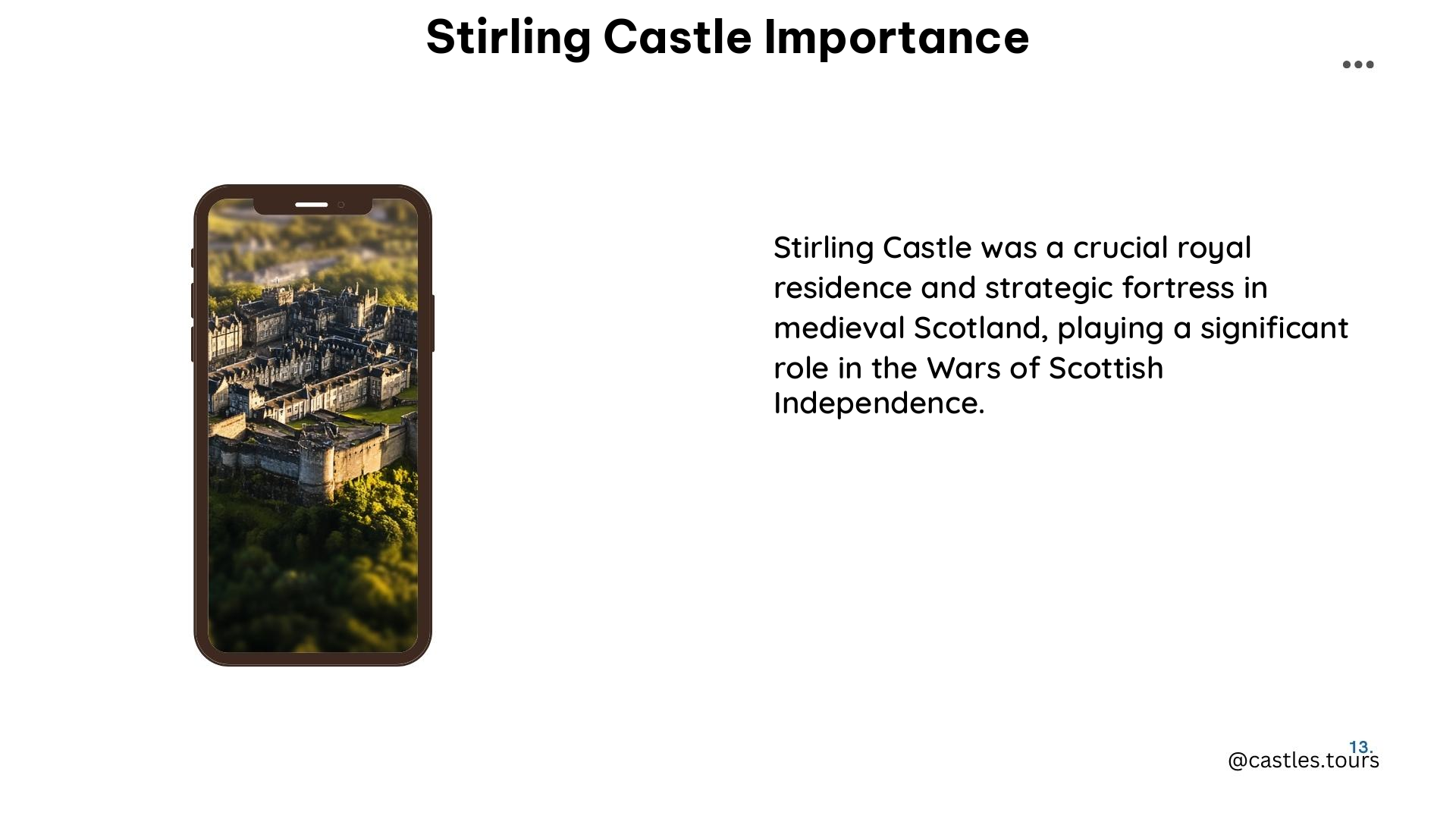Stirling Castle, perched atop a volcanic rock, has long been a symbol of Scotland’s rich history and cultural heritage. As a strategic stronghold, royal residence, and architectural marvel, this iconic castle has played a pivotal role in shaping the nation’s past and continues to captivate visitors from around the world.
The Strategic Significance of Stirling Castle

Stirling Castle’s commanding position at the intersection of the Highlands and the Forth Valley made it a crucial stronghold in Scotland’s history. Situated on a steep-sided volcanic rock, the castle offered a formidable defensive position, with steep cliffs on three sides. This strategic location allowed the castle to control the key crossing point over the River Forth, a vital transportation route connecting the north and south of the country.
During the Wars of Scottish Independence, Stirling Castle was a hotly contested prize, changing hands multiple times between the English and Scottish forces. Two of the most significant battles in this conflict were fought in the vicinity of the castle: the Battle of Stirling Bridge in 1297 and the Battle of Bannockburn in 1314. These victories for the Scots helped solidify their independence and cemented Stirling Castle’s place in the nation’s history.
Stirling Castle as a Royal Residence

Stirling Castle’s strategic importance was matched by its significance as a royal residence. Many Scottish monarchs, including James IV and Mary, Queen of Scots, favored the castle as a place of residence and power. It was here that Mary, Queen of Scots, was crowned in 1543 at the tender age of nine months.
The castle’s architectural splendor reflects its status as a royal seat. The Great Hall, built for James IV around 1503, is the largest medieval hall in Scotland and a testament to the castle’s grandeur. The Royal Palace, constructed in the 1540s, is one of the most well-preserved examples of Renaissance architecture in Britain, showcasing the artistic and cultural aspirations of the Scottish monarchy.
Architectural Significance and Restoration
Stirling Castle’s architectural significance extends beyond its role as a royal residence. The castle’s buildings and structures represent a diverse range of architectural styles, from the imposing medieval fortifications to the elegant Renaissance-inspired palace. The restoration of the Royal Palace, which took place from 2001 to 2011, has been widely praised for its attention to historical accuracy and attention to detail.
The painstaking restoration process has allowed visitors to experience the castle as it would have appeared during its heyday, with the interiors and furnishings meticulously recreated to reflect the opulence and grandeur of the Scottish court. This attention to detail has helped to cement Stirling Castle’s reputation as a premier heritage site and a must-visit destination for anyone interested in Scottish history and architecture.
Cultural Significance and Tourism
Stirling Castle’s enduring importance is not limited to its historical and architectural significance. The castle has also become a symbol of Scottish culture and identity, featuring on the reverse side of the Clydesdale Bank’s £20 notes. It has also been used as a filming location for various productions, including the TV series “Colditz,” further cementing its place in the public consciousness.
Today, Stirling Castle is a major tourist attraction, drawing in over 600,000 visitors in 2019 alone. Managed by Historic Environment Scotland, the castle offers a range of visitor experiences, including guided tours, audio guides, and digital British Sign Language tours, ensuring that it remains accessible to a wide audience.
Conclusion
Stirling Castle’s importance in Scottish history and culture cannot be overstated. As a strategic stronghold, royal residence, architectural marvel, and cultural icon, this iconic castle has played a pivotal role in shaping the nation’s past and continues to captivate visitors from around the world. Its enduring significance is a testament to the resilience and pride of the Scottish people, who have long recognized the castle’s importance as a symbol of their nation’s rich heritage.
